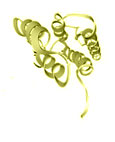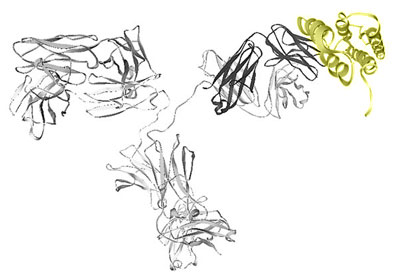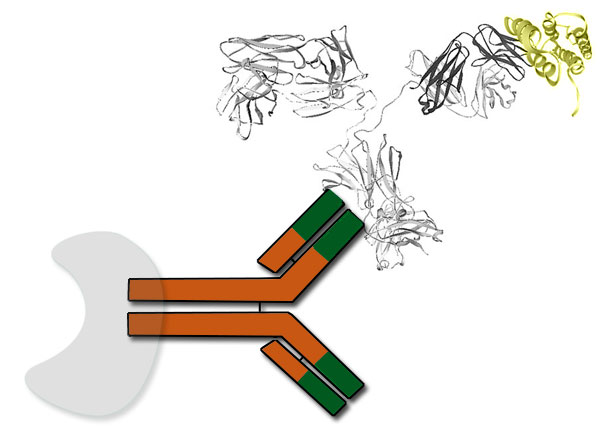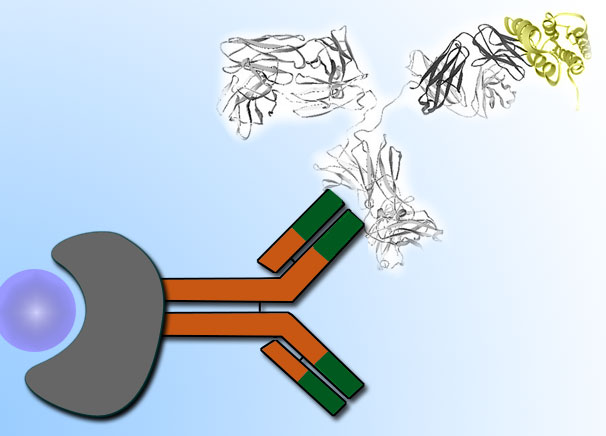|
Immunology Laboratory |
Elisa assay |
| |
The Enzyme-Linked
ImmunoSorbent
Assay is a serological test that can be used to detect
particular antigens or antibodies.
An ELISA assay such as the one you will do
in this lab would be used to diagnose HIV infection by
detecting the
presence of antibodies to HIV.
|
|
A few Elisa methods exist: their
difference resides in the sequence in which antigens and antibodies are
added to a solid substrate (96-well plate or a micro-well strip). |
|
|
|
- In an antibody capture assay,
antigen is first bound in the plastic wells.
- Then, the primary antibody
binds to (or is captured by) the immobilized antigen.
- A secondary antibody (conjugated to
the enzyme horseradish peroxidase (HRP)) is added, and binds to the
first antibody.
- The substrate
3,3,5,5-tetramethylbenzidine (TMB) is added. HRP reacts with TMB
(chromogenic reagent) and gives a blue colour which can be
quantified.
|
- In an antigen capture assay,
primary antibody is fixed onto the plastic wells,
- antigen is captured by the
immobilized primary antibody,
- and the captured antigen is detected
by a secondary antibody, also conjugated to HRP,
- that turns the assay solution blue
upon reaction with TMB.
|
|
|
|
Protocol |
|
|
|
Antigen is bound |
|
|
|
Label the 12-well strip.
On each strip label the first 3 wells with a + for the positive
controls and the next 3 wells with a for the negative controls.
Label the remaining wells to identify the samples being tested (3 wells
each). Use a fresh pipet tip to transfer 50 μl with purified antigen
(Ag) into all 12 wells of the microplate strip.
Wait 5 minutes for the antigen to
bind to the plastic wells.

The appropriate antigen is first absorbed
to the walls of a microplate strip: HIV capsid protein p24 could serve
as the antigen. |
|
|
Wash |
|
|
|
Tip the microplate strip upside down onto
the paper towels, and gently tap the strip a few times upside down. Make
sure to avoid splashing sample back into wells. Discard the top paper
towel. Use your pipet to fill
each well with wash buffer, taking care not to spill over into
neighbouring wells. Note: the same pipet tip is used for all washing
steps.
Tip
the microplate strip
upside down onto the paper towels and tap. Discard the top 23 paper
towels. Repeat wash.
Washing removes what is not bound to the
plastic. |
|
|
Antibody and controls |
|
|
|
Use a fresh pipet tip to
transfer 50 μl of the positive control (+) into the three + wells. Use
a fresh pipet tip to transfer 50 μl of the negative control () into the
three wells. Transfer 50 μl of each of your teams serum samples
into the appropriately initialed three wells, using a fresh pipet tip
for each serum sample.
Wait 5 minutes for the
antibodies to bind to their targets.
Wash the unbound primary
antibody out of the wells two times.
Serum that may contain antibodies against
the antigen is added to the well (human IgG). If the antibodies are
present in the sample, they will bind to the antigens that are absorbed
to the wall of the well. If the sample contains only non-specific
antibodies, they will not bind to the antigen.
Washing removes any antibodies which do not specifically attach to the
antigen absorbed to the well.

Control samples (samples which will give known results) must be run side
by side with actual samples to ensure that the assay is working
correctly. |
|
|
Secondary antibody |
|
|
Use a fresh pipet tip to transfer 50 μl of secondary antibody (HPRO-2ndAb)
into all 12 wells of the microplate strip.
Wait 5 minutes for the antibodies to bind to their targets.
Wash the unbound
secondary antibody out of the wells 3 times.

If antibodies in the previous step have
attached to the antigen, these antibodies can be detected by the
addition of an anti-human IgG antibody-enzyme conjugate. The wash step gets rid
of the antibody-enzyme conjugate which did not find a specific antibody
and could not form a complex. |
|
|
Enzyme substrate |
|
|
|
Use a fresh pipet tip to transfer 50 μl of
enzyme substrate (TMB) into all 12 wells of the microplate strip. Wait 5
minutes.

A colour change indicates that the serum
contained specific antibodies which reacted against the original antigen. |
|
Click here to continue with the topic of
hemagglutination |
|
|
|
|
|
|
|